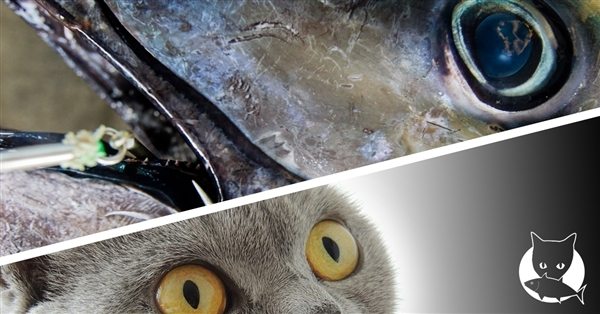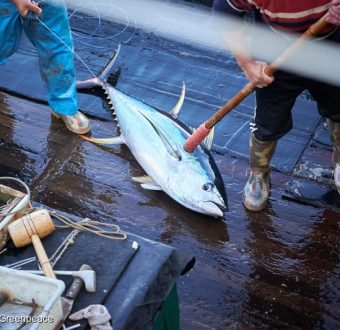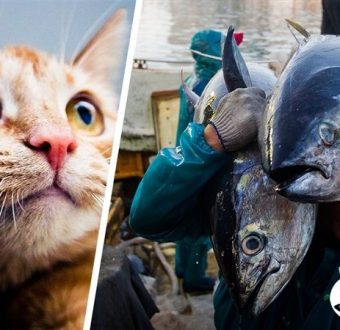It’s #NotJustTuna as we know it — as sandwich filling or sushi — it’s also what our pets are eating.
Haunted by stories of human rights abuse, worker exploitation and destructive fishing, tuna giant Thai Union ships hundreds of thousands of cans of cat food to Mars each year containing tuna and other seafood.
Although more famous for peddling Mars bars, Mars is also the largest pet food company on the planet. It owns many of the pet food brands you’ll see in the supermarket or at your vet, including Whiskas, Iams and Dine. And they all use tuna and other seafood sourced from Thailand.
Many of the tuna products are top shelf gourmet cat food, with names like ‘Tuna Fillets and Whole Prawns in a Seafood Sauce’ and ‘Tender Tuna’’, and they’re marketed with images of fluffy kittens who couldn’t possibly do any harm to anything or anyone. Meanwhile, we’ve heard stories of the fishermen who catch tuna eating bait, working 20-hour shifts, and suffering terrible bullying.
The use of cheap and sometimes unpaid labor underpins the destruction of our oceans. Tuna companies with little regard for human rights often have little regard for the environment. Companies like Thai Union use indiscriminate and wasteful fishing methods that capture and kill huge numbers of sharks, juvenile tuna, and even rays and turtles. Great business model huh?
It adds another degree of shocking to think that much of this is happening to feed cats.
A recent New York Times article confirmed Iams seafood products were made in a Thai Union cannery that was found to process fish from boats using trafficked and forced labor.
And we’re worried it doesn’t stop there.
We’ve repeatedly asked Mars about their connection with Thai Union and where the seafood in Whiskas comes from, but so far Mars have failed to answer. And if Mars won’t tell us this, how can pet food shoppers be sure they aren’t supporting slavery?
That’s why we’re asking to public to help us ask Mars a simple question, ‘What’s in your Whiskas?’
Some pet food companies, like Nestle, have acknowledged human rights abuses in their supply chain and are front-footing change. We think it’s time for Mars to come clean and do the same.
The cold truth is, it’s very hard to know where the seafood in a particular can of cat food comes from. Supply chains are murky and labeling is poor, making it almost impossible to tell if a particular can of cat food is the product of a forced or abused workforce. Even Thai Union accepts it’s impossible to be sure a supply chain is 100% clean. You have to question it all.
Whether you love cats or think they’re an environmental disaster, the point is that a few global corporations are lining their pockets BIG TIME. And they’re doing it without caring about anything else – fishermen, tuna, or how their customers might feel about the way it’s caught.
Cat food is no small market, in the U.S. they eat almost twice as much fish as people. Meanwhile, tuna stocks are rapidly depleting and people around the world are starving. There is something very wrong here.
If you’re a pet parent, you can use your purchasing power to reject brands that serve your cat bad tuna. As a first step, it’s time Mars told us where their seafood comes from and guarantees that human rights and our oceans have not been sacrificed along the way.
TAKE ACTION: Send a message to Mars demanding proof it’s not feeding cats bad tuna!






